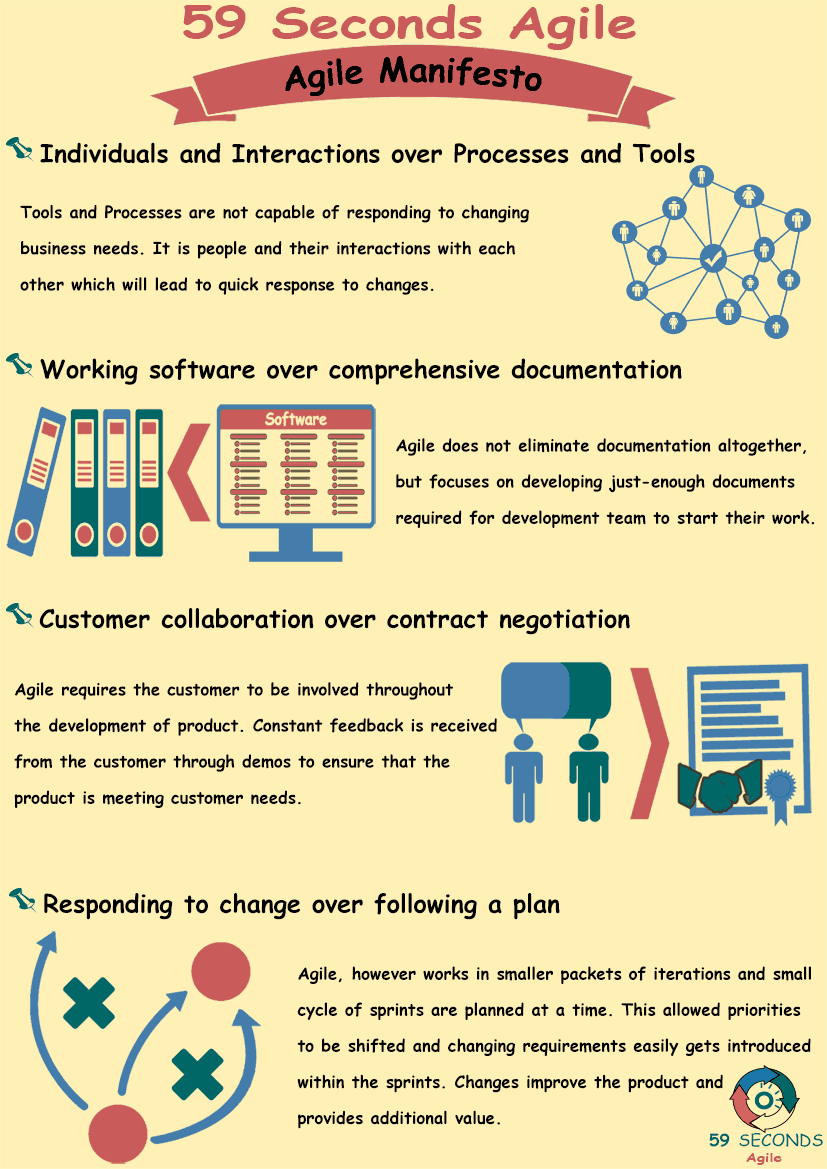Using the Agile Manifesto to Deliver Change
A 59 Seconds Agile Training Video
Continue to Part 6 Below
The Agile Manifesto
A 59 Seconds Agile Article
This article provides an ‘Introduction to the Agile Manifesto’ and looks to discuss what a values are stated within the Manifesto.
Working Software over Comprehensive Documentation
Traditional development environments often have a large amount of paperwork involved with any product request. A request is made, and then a product analyst writes a functional specification to detail how the functionality should behave. A developer then writes a technical document to indicate the code changes required to fulfil the functional specification.
Only after each department completes their portion, does work begin on a request. Depending on the priorities, a request may not be addressed for months or even years. This generates a large amount of unnecessary paperwork that reduces the time of the product development.
The Agile Value of working software, bypasses these hurdles completely. Instead of stepping through layers of red tape, all the roles of the Development process work together. The Stakeholder raises a request to the Product Owner. Then, the Product Owner prioritises the backlog and communicates the prioritised backlog to the development team.
The Product Owner and development team have the authority to make decisions. This accelerates the pace of development, and gets new products and features out the door more quickly. In turn, this improves the satisfaction of stakeholders, as they see a steady flow of value being delivered within each product increment.
Continue Reading —> Next
The Agile Manifesto
A 59 Seconds Agile Video Animation
Continue Reading —> Next
User Stories Applied
A 59 Seconds Agile Book Review
User Stories Applied by Mike Cohn is one of our favourite books on Agile User Stories. The book starts with an overview into user stories, and details what a user story is and the different aspects of them. He then discusses how to go about writing a user story, and provides details of the INVEST criteria that can be used to determine if the story is meeting all of its objectives. Next Mike gives an in depth discussion of who user stories are written for and where to begin when gathering the details for them. The book then discusses acceptance testing user stories, including how to go about specifying these criteria and the responsibilities of the development team and customers during this process.
Continue Reading —> Next
The Agile Manifesto
A 59 Seconds Agile Infographic

Continue Reading —> Next
Agile Scrum Master Training Course
Our Favourite Agile Books
We found these books great for finding out more information on Agile Scrum:
Continue Reading —> Next


